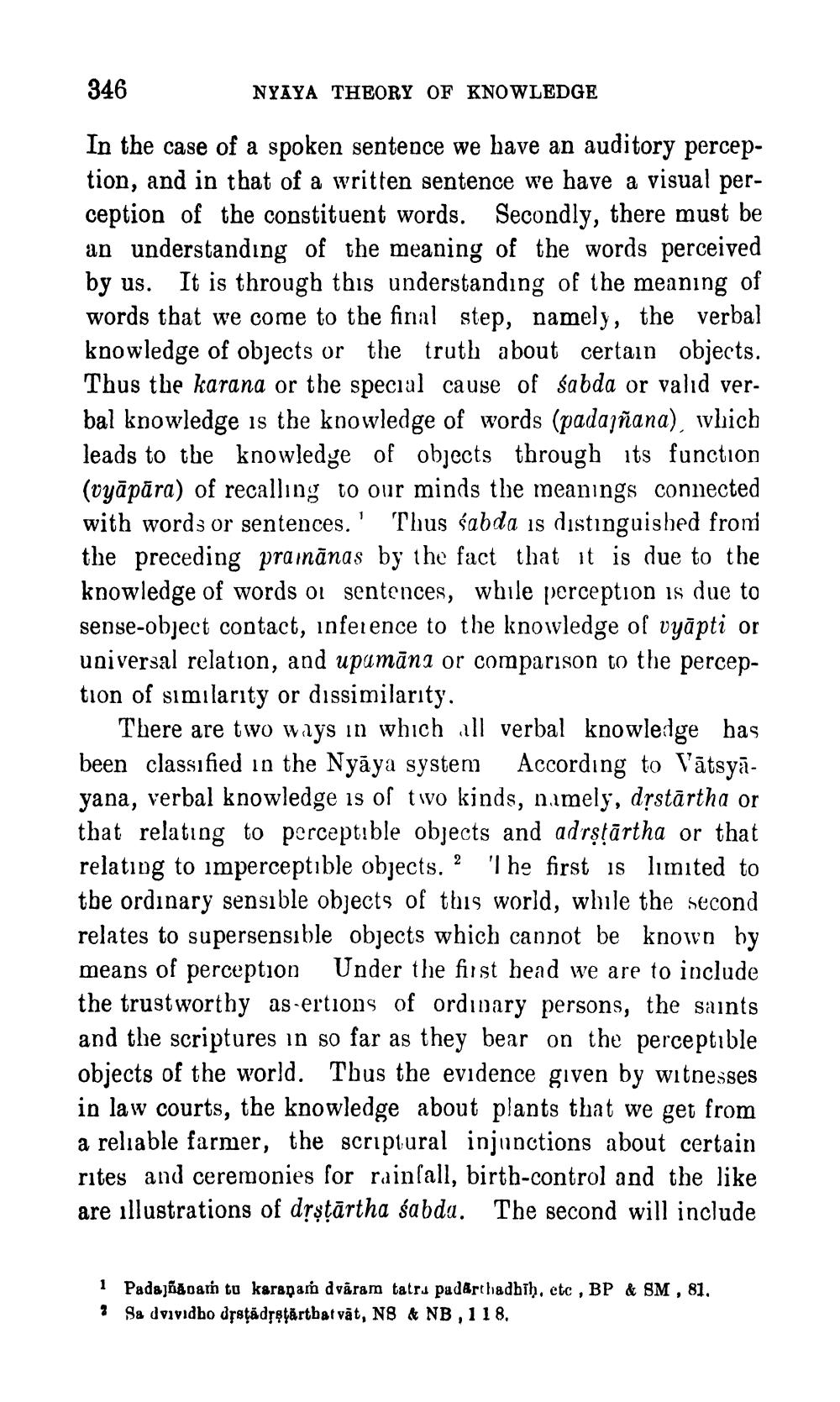________________
346
NYAYA THEORY OF KNOWLEDGE
In the case of a spoken sentence we have an auditory perception, and in that of a written sentence we have a visual perception of the constituent words. Secondly, there must be an understanding of the meaning of the words perceived by us. It is through this understanding of the meaning of words that we come to the final step, namely, the verbal knowledge of objects or the truth about certain objects. Thus the karana or the special cause of sabda or valıd verbal knowledge is the knowledge of words (padajñana), which leads to the knowledge of objects through its function (vyāpāra) of recalling to our minds the meanings connected with words or sentences.' Thus sabda is distinguished from the preceding praiānas by the fact that it is due to the knowledge of words or sentences, while perception is due to sense-object contact, inference to the knowledge of vyāpti or universal relation, and upamāna or comparison to the perception of similarity or dissimilarity.
There are two ways in which all verbal knowledge has been classified in the Nyāya system According to Vātsyāyana, verbal knowledge is of two kinds, nimely, drstārtha or that relating to perceptible objects and adrstārtha or that relating to imperceptible objects. ? 'l he first is limited to tbe ordinary sensible objects of this world, while the second relates to supersensible objects which cannot be known by means of perception Under the first head we are to include the trustworthy as-ertions of ordinary persons, the saints and the scriptures in so far as they bear on the perceptible objects of the world. Thus the evidence given by witnesses in law courts, the knowledge about plants that we get from a reliable farmer, the scriptural injunctions about certain rites and ceremonies for rainfall, birth-control and the like are illustrations of dịşțārtha sabda. The second will include
1 Padajñāoarn to karanam dvaram tatrs pad&rthadhih, ctc , BP & SM , 81. 3 Sa dvividbo dystādretártbatvāt, NS & NB, 118,




